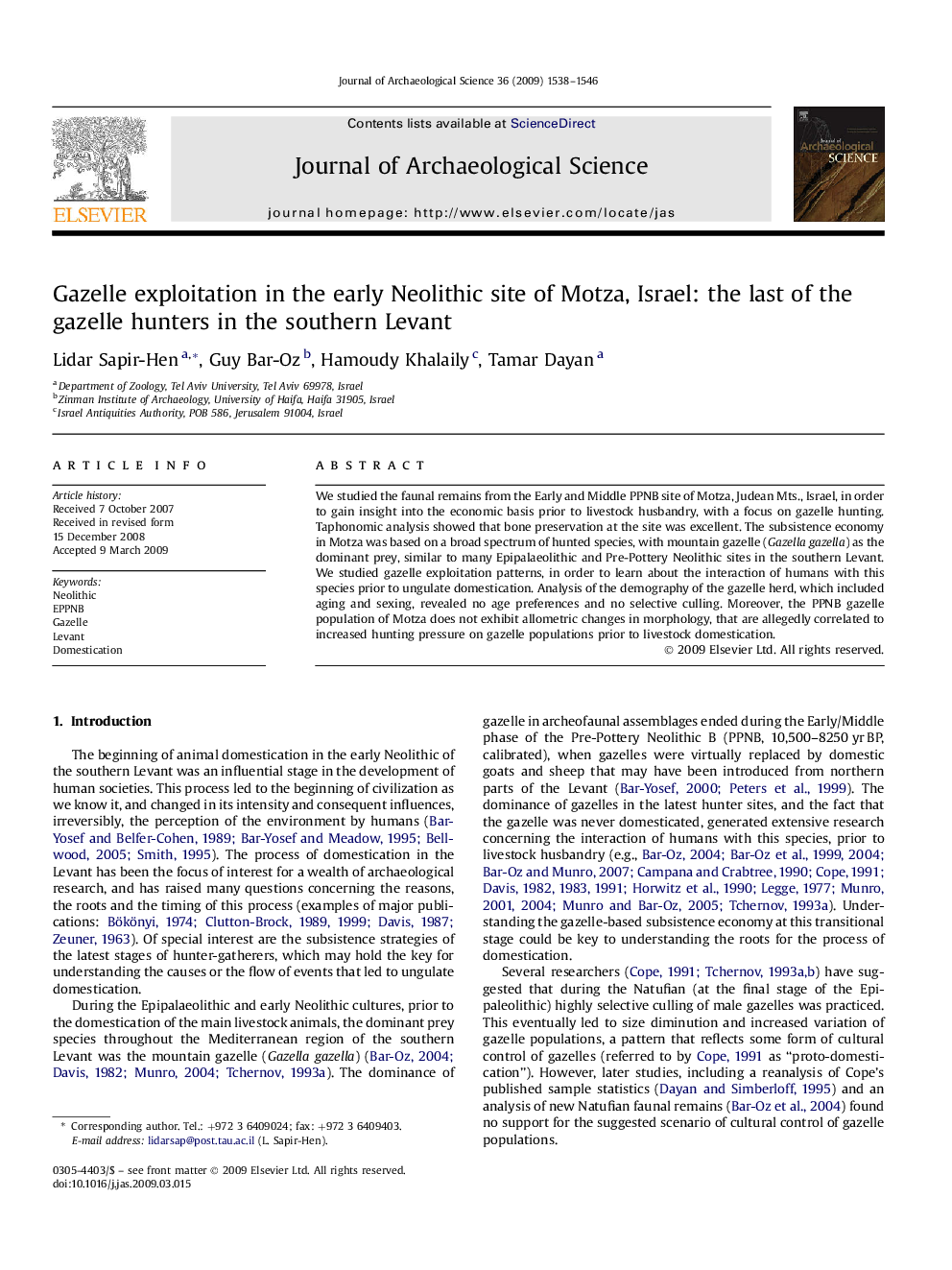| Article ID | Journal | Published Year | Pages | File Type |
|---|---|---|---|---|
| 1037031 | Journal of Archaeological Science | 2009 | 9 Pages |
We studied the faunal remains from the Early and Middle PPNB site of Motza, Judean Mts., Israel, in order to gain insight into the economic basis prior to livestock husbandry, with a focus on gazelle hunting. Taphonomic analysis showed that bone preservation at the site was excellent. The subsistence economy in Motza was based on a broad spectrum of hunted species, with mountain gazelle (Gazella gazella) as the dominant prey, similar to many Epipalaeolithic and Pre-Pottery Neolithic sites in the southern Levant. We studied gazelle exploitation patterns, in order to learn about the interaction of humans with this species prior to ungulate domestication. Analysis of the demography of the gazelle herd, which included aging and sexing, revealed no age preferences and no selective culling. Moreover, the PPNB gazelle population of Motza does not exhibit allometric changes in morphology, that are allegedly correlated to increased hunting pressure on gazelle populations prior to livestock domestication.
